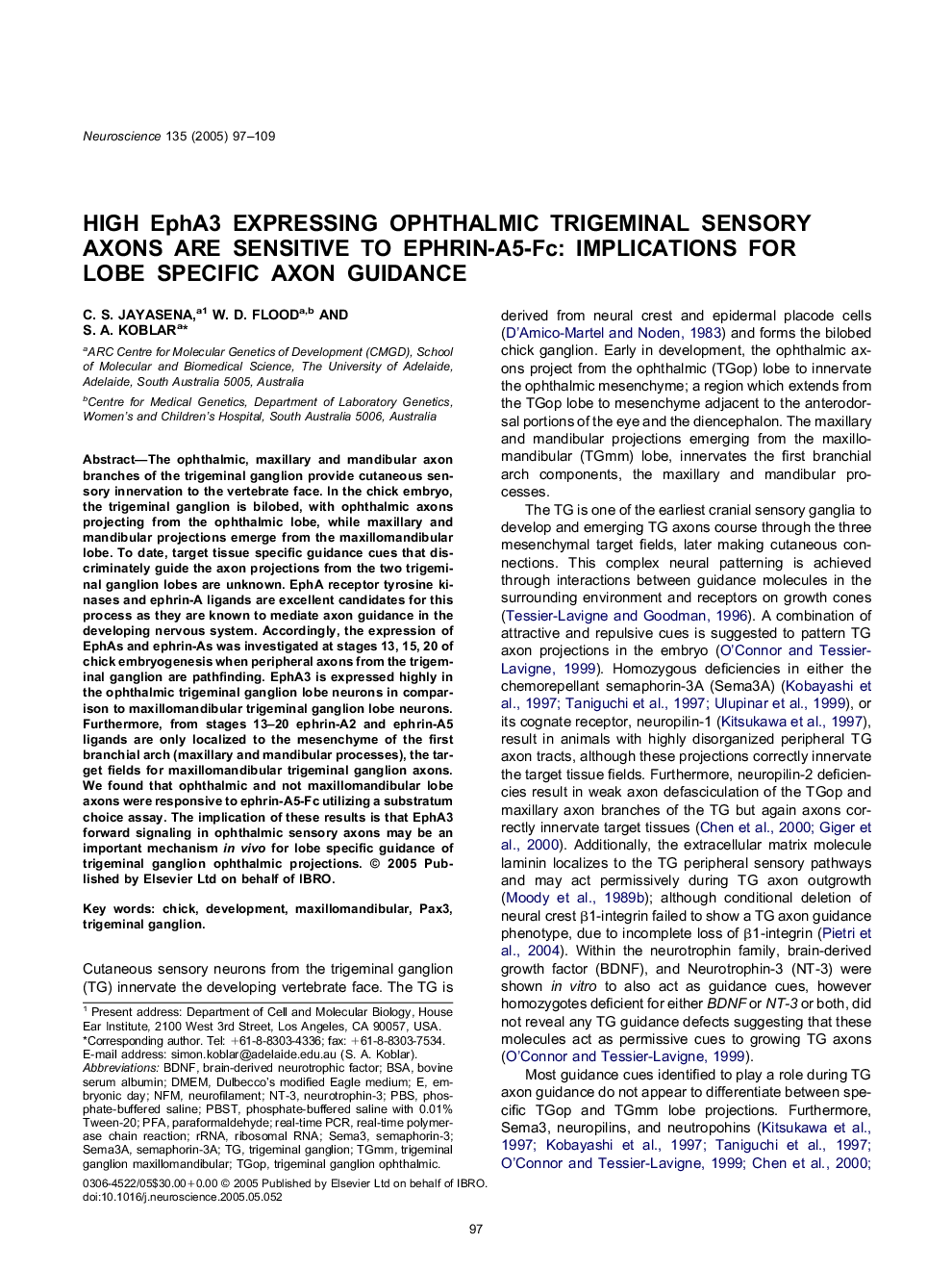| Article ID | Journal | Published Year | Pages | File Type |
|---|---|---|---|---|
| 9425758 | Neuroscience | 2005 | 13 Pages |
Abstract
The ophthalmic, maxillary and mandibular axon branches of the trigeminal ganglion provide cutaneous sensory innervation to the vertebrate face. In the chick embryo, the trigeminal ganglion is bilobed, with ophthalmic axons projecting from the ophthalmic lobe, while maxillary and mandibular projections emerge from the maxillomandibular lobe. To date, target tissue specific guidance cues that discriminately guide the axon projections from the two trigeminal ganglion lobes are unknown. EphA receptor tyrosine kinases and ephrin-A ligands are excellent candidates for this process as they are known to mediate axon guidance in the developing nervous system. Accordingly, the expression of EphAs and ephrin-As was investigated at stages 13, 15, 20 of chick embryogenesis when peripheral axons from the trigeminal ganglion are pathfinding. EphA3 is expressed highly in the ophthalmic trigeminal ganglion lobe neurons in comparison to maxillomandibular trigeminal ganglion lobe neurons. Furthermore, from stages 13-20 ephrin-A2 and ephrin-A5 ligands are only localized to the mesenchyme of the first branchial arch (maxillary and mandibular processes), the target fields for maxillomandibular trigeminal ganglion axons. We found that ophthalmic and not maxillomandibular lobe axons were responsive to ephrin-A5-Fc utilizing a substratum choice assay. The implication of these results is that EphA3 forward signaling in ophthalmic sensory axons may be an important mechanism in vivo for lobe specific guidance of trigeminal ganglion ophthalmic projections.
Keywords
rRNAPBSSemaphorin-3aDMEMmaxillomandibularSema3NFMPAX3Sema3APBSTPFANT-3BDNFBSADulbecco’s modified Eagle mediumReal-time PCRRibosomal RNAbovine serum albuminChickDevelopmentembryonic dayBrain-derived neurotrophic factorPhosphate-buffered salineneurotrophin-3neurofilamentreal-time polymerase chain reactionparaformaldehydetrigeminal ganglion
Related Topics
Life Sciences
Neuroscience
Neuroscience (General)
Authors
C.S. Jayasena, W.D. Flood, S.A. Koblar,
